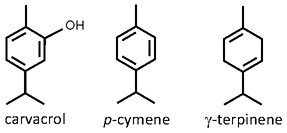 Satureja hortensis
Satureja hortensis
summer savory
Back to “Culinary herbs: summer savory (Satureja hortensis)”
Satureja hortensis L. (Lamiaceae); bonekruid (Afrikaans); chubritsa (Bulgarian); bonenkruid (Dutch); sarriette (French); Bohnenkraut, Pfefferkraut (German); santoreggia (Italian); seibari (Japanese); sabori (Korean); segurelha-das-hortas (Portuguese); ajedrea, sabroso (Spanish); kyndel (Swedish)
DESCRIPTION Summer savory is the fresh or dried stem tips with leaves. They are soft and succulent with a spicy, peppery taste and an aroma reminiscent of thyme and oregano but with a hint of mint.
THE PLANT An erect, much-branched annual herb with small, pink flowers. The closely related winter savory (S. montana) is a perennial shrublet with spreading branches bearing stiff, sharply pointed leaves and white flowers. Thyme-leaved savory (Satureja thymbra) is a shrublet with purple flowers arranged in clusters along terminal inflorescences.
ORIGIN Savory is indigenous to southeastern Europe (summer savory) or the Mediterranean region, including southern Europe and North Africa (winter savory).1 Thyme-leaved savory originates from the southeastern parts of Europe (Balkans, Crete and Greece). Savory has a long history of use as medicine and also for its alleged aphrodisiac properties, as the generic name (derived from “satyr’s herb”) suggests.2
CULTIVATION Plants are easily grown from seeds sown in spring. The perennial S. montana and S. thymbra are more often propagated from cuttings. Summer savory and the other species will thrive in any fertile, well-drained soil that is regularly fertilized and watered.
HARVESTING The leafy stems tips are picked and used fresh, but dried summer savory is commercially available as a spice herb in some countries. Regular harvesting and pruning is beneficial to prevent flowering and prolong the production of new leaves.
CULINARY USES Fresh summer savory is traditionally used to flavour beans and bean dishes (pulses), especially broad beans.2,3 It is an important culinary herb in Germany, France, the Balkan region (especially Bulgaria),3 Georgia and also Canada. The German name Pfefferkraut reflects the peppery taste and the historical use as pepper substitute. Summer savory (less often winter savory) goes with salads, mushrooms, ragouts, grilled veal, loin of pork and roast lamb. The fresh or dried herb can be used to flavour pulses (peas, lentils, beans), stews, ragouts, soups, sauces, scrambled egg, poultry, pâtés and stuffings. Dried savory is used in spice mixtures (including commercial versions of herbes de Provence and fines herbes), The spice or its oil is used in food processing, especially for soup and gravy mixtures but also confectionery, processed vegetables, condiments, meat products and many more. Savory is used to flavour herbal liqueurs, vermouths and various soft cheeses made from sheep and goat’s milk.
FLAVOUR COMPOUNDS The flavour is derived from carvacrol, p-cymene and γ-terpinene as main essential oil volatiles, but sometimes also with thymol and other minor constituents.4,5 The presence of linalool and limonene, especially in S. montana, accounts for the slight spicy and lemony flavours.

NOTES Essential oil from both species is used in cosmetics, soaps and detergents.
1. Mabberley, D.J. 2008. Mabberley’s plant-book (3rd ed.). Cambridge University Press, Cambridge.
2. Larousse. 1999. The concise Larousse gastronomique. Hamlyn, London.
3. Gernot Katzer’s Spice Pages (http://gernot-katzers-spice-pages.com).
4. Mihajilov-Krstev, T., Radnović, D., Kitić, D., Zlatković, B., Ristić, M., Branković, S. 2009. Chemical composition and antimicrobial activity of Satureja hortensis L. essential oil. Central European Journal of Biology 4: 411−416.
5. Novak, J., Bahoo, L., Mitteregger, U., Franz, C. 2006. Composition of individual essential oil glands of savory (Satureja hortensis L., Lamiaceae) from Syria. Flavour and Fragrance Journal 21: 731–734.